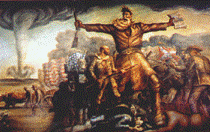History, Department of

James A. Rawley Graduate Conference in the Humanities
Date of this Version
April 2008
Document Type
Article
Abstract
White nurses employed by the Bureau of Indian Affairs (BIA) between 1924 and 1955 were particularly attracted to scientific methods of nursing practice and medical research. The rising emphasis on science in early twentieth-century America shaped the ways that nurses carried out procedures and responded to demanding jobs. Science, however, also represented excitement, a journey into a new world, and an opportunity to challenge old ideas about nurses’ place on the medical ladder. As new women, they were less likely to accept male physicians’ notions of superiority, and they demonstrated this by pushing the boundaries between nursing practice and physicians’ practice. Primary documents left by new nurses indicate that these women recognized such activities were essential to the wellbeing of their Native American patients on reservations from Montana to Arizona. Science, then, functioned as a major force in new nurses’ lives as they shaped its concepts to mold an even newer image of womanhood and recast “nursehood.”


Comments
Paper presented at the 3rd Annual James A. Rawley Conference in the Humanities — Imagining Communities: People, Places, Meanings. Lincoln, Nebraska, April 12, 2008. Sponsored by the University of Nebraska–Lincoln History Graduate Students’ Association. Copyright © 2008 Lisa Schuelke.